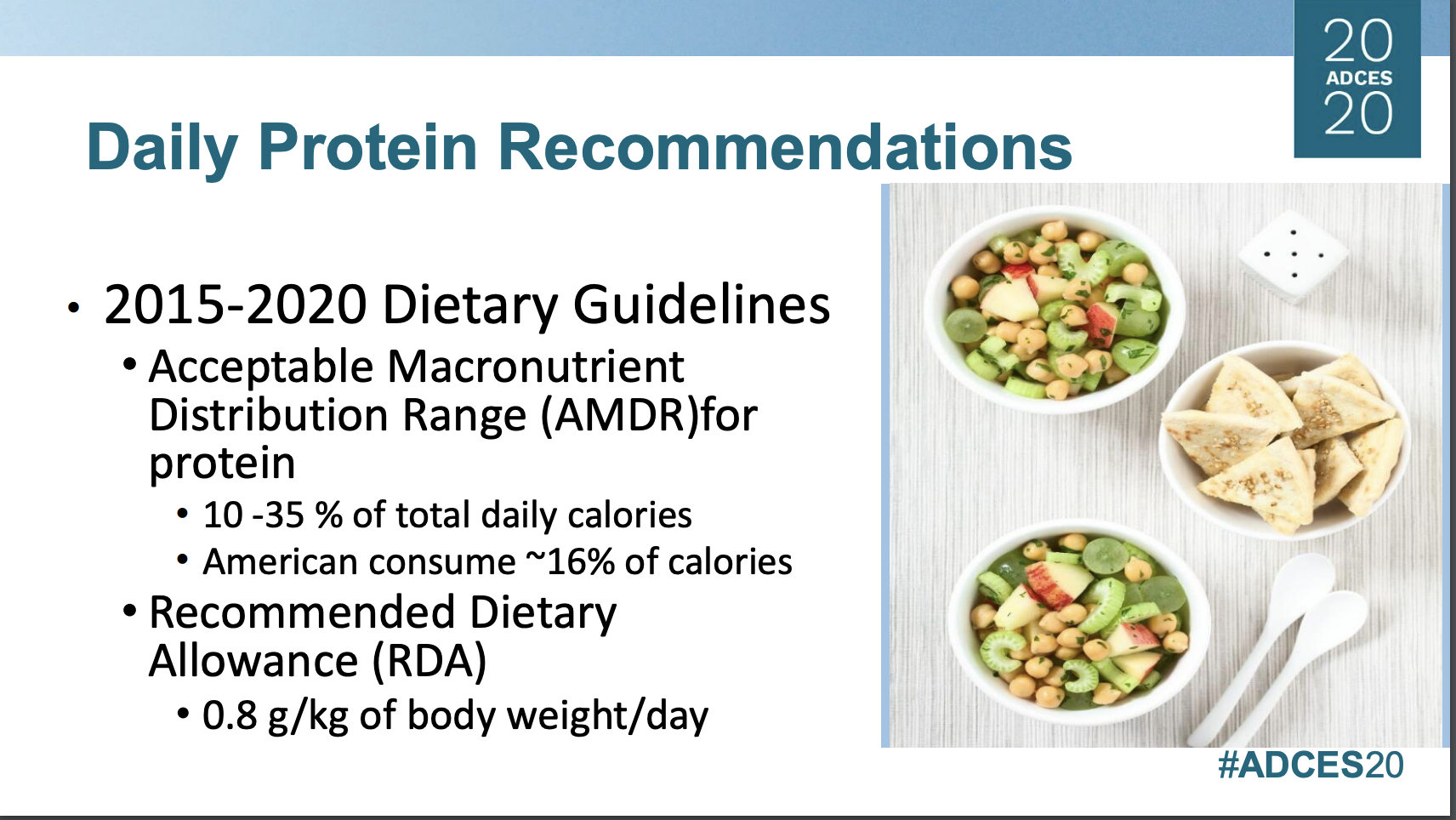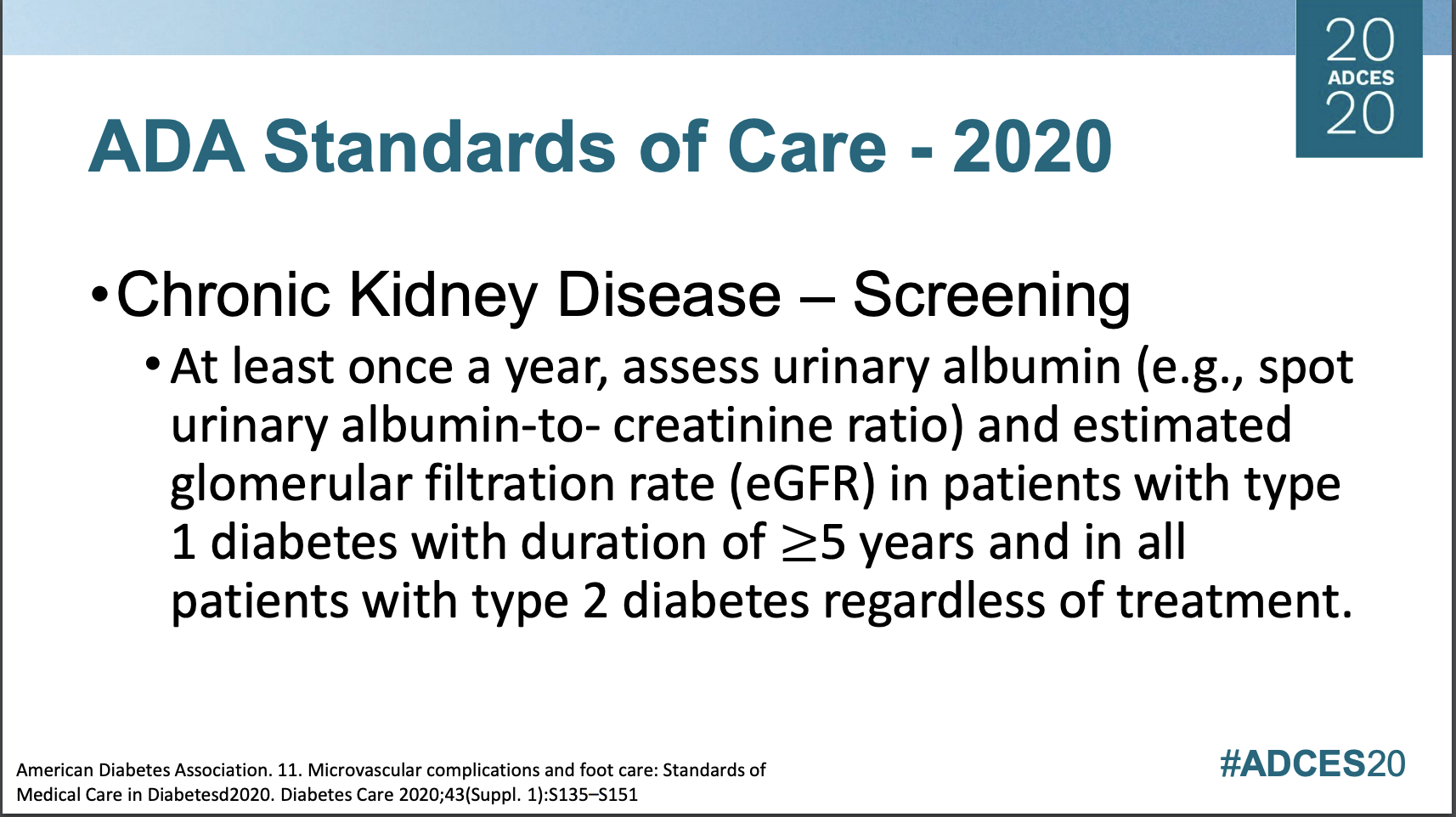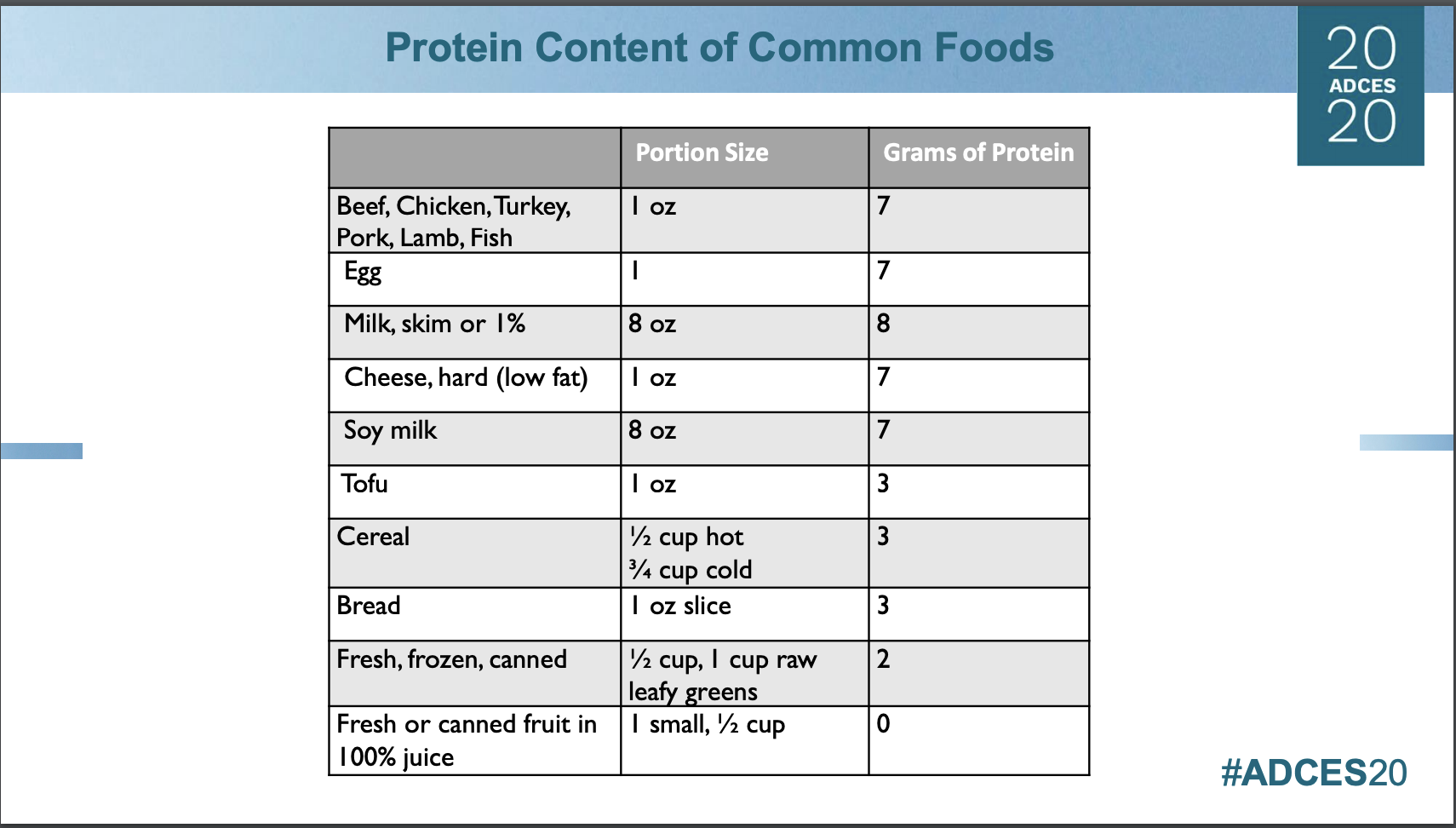Diabetes and Protein: How Low Should You Go?
Written by: Beyond Type 2 Editorial Team
5 minute read
August 28, 2020
If you have diabetes and have kidney disease, should you lower your protein intake? Constance Brown-Riggs, MSEd, RD, DCES, CDN, gives the answer.
This article is part of our coverage of the Association of Diabetes Care and Education Specialists 2020 Virtual Conference. To read our other articles on the latest in diabetes education from the conference, click here.
Protein is a widely-discussed topic within the diabetes community, especially when it comes to discussing low-carb, high protein diets and how much should be consumed, in general. But at this year’s ADCES virtual conference, Constance Brown-Riggs, MSEd, RD, DCES, CDN, discussed another aspect to protein intake for people with diabetes at risk for chronic kidney disease (CKD) or already on dialysis to treat it:
Should you lower your protein intake if you’re a person with diabetes with kidney disease?
What is Protein?
Protein is one of the macronutrients other than carbohydrates and fats. It consists of amino acids, both essential and nonessential. Essential amino acids are unable to produced by the body and need to be obtained from food, whereas nonessential proteins are naturally produced by the bodies.
Think of these amino acids as the building blocks that help construct scar tissue, hair, nail and skin. Protein also plays an important role in regulating fluid balance and help transport other nutrients and oxygen throughout the body. In the absence of dietary carbohydrate, protein can be used for glucose in a process called gluconeogenesis. People with diabetes on low-carb diets such as the keto diet may be familiar with this process.
Proteins can also be designated as complete or incomplete proteins. Complete proteins contain all essential amino acids and are of high biological value (HBV). This means they’re highly digestible and absorbed by the body. Complete proteins include:
- Eggs
- Meat
- Fish
- Poultry
- Cheese
- Milk
Incomplete proteins do not have all essential amino acids and less digestible to be used by the body. Incomplete proteins include:
- Nuts
- Seeds
- Rice
- Beans
- Grains
How Much Protein Should People with Diabetes Eat?
The standard acceptable macronutrient daily range (AMDR) for protein intake is that it should consist of 10-35 percent of your daily caloric intake. This range covers the needs of most active adults. For people with diabetes, there’s no ideal percentage, however, according to Brown-Riggs, people with diabetes eat about the same proportions of protein as the general population, which is about 15-20 percent of protein making up the daily total calories.
Chronic Kidney Disease, Diabetes and Protein intake
Chronic kidney disease is one of the long-term complications of diabetes and if left untreated, can result in dialysis and kidney failure. Kidney disease is commonly measured by creatinine and the estimated glomerular filtration rate (eGFR).
During her presentation, Brown-Riggs mentioned that 20 to 40 percent of people with diabetes will go on to develop chronic kidney disease (CKD). People with type 1 diabetes who’ve had diabetes for at least five years should be screened for CKD at least once per year. For people with type 2 diabetes should also be screened once per year regardless of treatment. Unfortunately, according to Brown-Riggs, people with type 2 diabetes may already be showing signs of CKD at diagnosis. Screenings for CKD should happen twice a year if the patients with urinary albumin exhibit:
- More than 30 mg/g of creatinine
- eGFR <60 mL/min/1.73 m2
Brown-Riggs stated that the usual approach to slowing the progression of CKD means lowering blood pressure by reducing sodium intake and reducing excessive  protein intake. In patients with CKD who are aren’t on dialysis, a protein intake of the recommended dietary allowance (RDA) of 0.8 grams of protein per kilograms of body weight per day slows the progression of CKD and a higher intake of protein is associated with more rapid kidney function loss.
protein intake. In patients with CKD who are aren’t on dialysis, a protein intake of the recommended dietary allowance (RDA) of 0.8 grams of protein per kilograms of body weight per day slows the progression of CKD and a higher intake of protein is associated with more rapid kidney function loss.
So what happens if you’re a person with diabetes on dialysis? That means you’d have to reduce your intake of protein, right? According to Brown-Riggs, that’s historically that’s been the solution.
But actually, Brown-Riggs explained that the amount of dietary protein below the RDA isn’t recommended, instead, the amount of protein should be increased to 1.2 to 1.3 grams of protein per kilograms of body weight per day, with a focus on quality, HBV protein. Why? Because patients on dialysis lose protein and essential amino acids and are at risk of malnutrition.
Still, people don’t necessarily think or eat in “grams” of protein and it’s important to make consuming a sufficient amount of protein as easy as possible. In this case, focusing on portion sizes and learning how much protein is in common foods per serving is key.
To summarize, people with diabetes who don’t have kidney disease do not need to restrict protein intake less than the average amount for the general population. People with diabetes with kidney disease also shouldn’t reduce the amount of protein in their diet but should increase it according to guidance from their healthcare provider.

Author
Beyond Type 2 Editorial Team
This piece was authored collaboratively by the Beyond Type 2 Editorial Team.
Related Resources

You may need to switch your type 2 medications at some point in the year....
Read more

Getting the medications, services and supplies you need to manage your type 2 diabetes should...
Read more

Sadly, not all type 2 diabetes medications, devices and services are covered by health insurance...
Read more

